Posted by: Ken @ 3:09 pm
We got out to the wetlands near our South Florida home just before sunrise this morning. Several mornings, we have seen Bobcats on the trail along the levee, so this is always our first stop. Since the trail is overgrown, we can approach it without being seen in advance. We walk quietly up the levee to the edge of the trail, and Mary Lou looks to the right while I look to the left. As is too often the case, we saw no Bobcats.
This was an earlier Bobcat sighting along the same path:
Light fog reduced visibility, and it did not look like a good time for photography. We continued north about a half mile to the Harbour Lakes impoundment, part of the water conservation area that we call our local birding patch.
Last week we had found a heron there that posed an identification challenge. Living on a lake, we have learned to identify the common herons quite easily, even when they are on the opposite shore.
I had never before seen a heron that looked like this one. It was a plain grayish brown all over, with darker wings, but no other prominent plumage features. Its bill and legs were black, and on our first encounter it was sitting quietly in shallow water at a fairly long distance, about 150 feet:
It was difficult to tell how large the bird was at this distance. I noticed it had a prominent “chin” that extended under the base of its lower mandible. Its neck was very long, and my guess was that it was an immature of some kind, possibly with abnormal pigmentation such as partial albinism or a deficiency of melanin.
I have the Sibley field guide app in my iPod, and I compared it to all the locally common herons and it certainly did not match the plumage of any species I viewed. A disadvantage of this app is that if you wish to compare the plumage of several species you must exit and then select individual species for comparison. Back home, when I thumbed through Sibley’s “real” field guide, this bird’s picture jumped right out at me. While I am familiar with the adults of this species, this was the first one I had seen in this plumage. It was still there this morning.
It was an immature Reddish Egret, and today its actions gave it away, as it engaged in a very characteristic foraging behavior that is quite unique. It chases after fish, willy-nilly, darting this way and that, alternately running, hopping and flapping, changing directions seemingly at random:
It will suddenly stop and shade the water with its wings, either to cut down on glare or to cause fish to seek shelter in the shadow:
The egret was joined by a Tricolored Heron. About 46 inches long (from tail tip to bill tip), the egret is almost twice the size of a Tricolored Heron (which measures 26 inches in length), and the latter is much more slender and has a proportionately longer neck: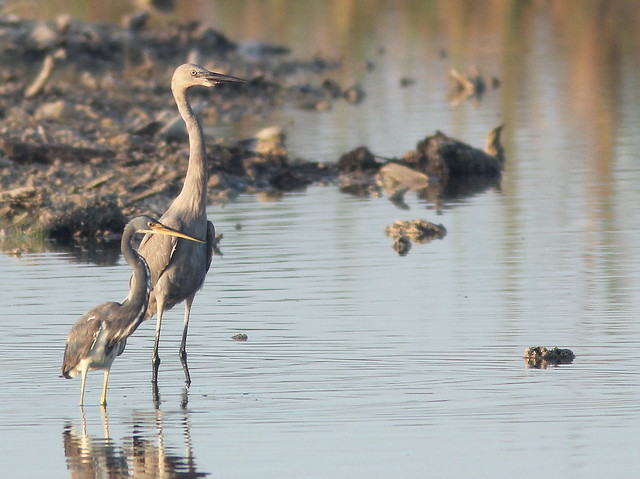
The Tricolored Heron is also a very active feeder, but its antics do not quite match up to those of the Reddish Egret:
The Reddish Egret is normally found in salt or brackish marshes along the coast, but immature birds are known to wander into the interior of Florida. We live 18 miles inland, and this was the first Reddish Egret I have seen or heard of in this area. For a slide show that shows both birds engaged in what looks like some kind of exotic dance, click here (best viewed full screen): Dance of the Herons
There was more excitement in store for us this morning, We had two new “first of Spring” arrivals, a Black-necked Stilt:
…and a flock of Least Terns:
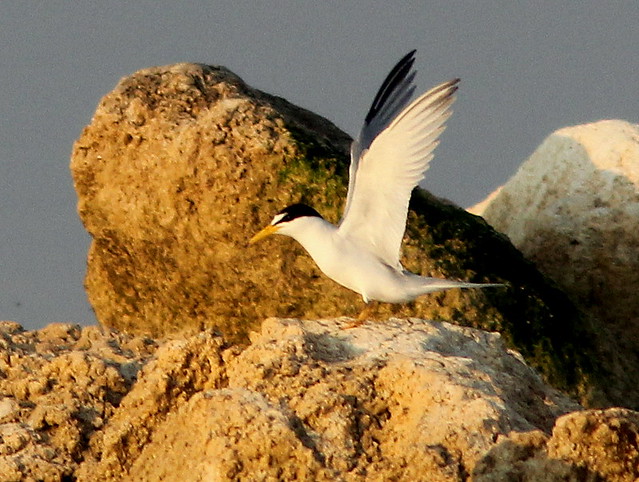
Least Terns have nested on the flat roofs of a nearby supermarket and an elementary school.They are a welcome sign that Spring has arrived. This is not a very good photo, but I find it almost impossible to catch one in flight:
Another treat this morning was finding two adult Bald Eagles roosting in a tree about 1/4 mile to the north. They are probably the pair that is nesting several blocks west of that location (the smaller male is to the left:
Also providing witness to the fact that Spring has surely arrived, a pair of Killdeers were engaged in a courtship ritual. Calling softly, the male (to the left) followed the female closely for several minutes:
Suddenly another male burst upon the scene. He partially spread his wings and expanded his upper black neck band in a threat display, and the males exchanged shrill calls:

The interloper was chased off by the original suitor:
Amid the commotion, the stilt also flew away: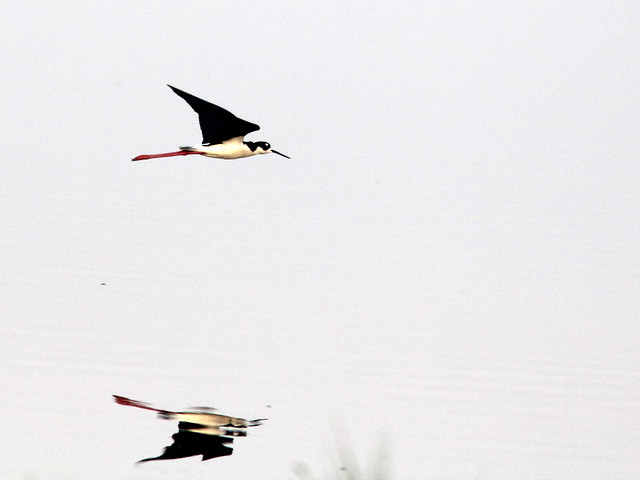
…while a Double-crested Cormorant surfboarded to a perfect landing:













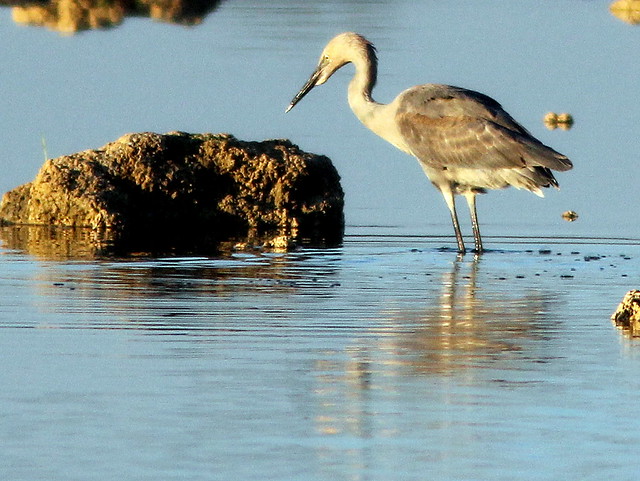
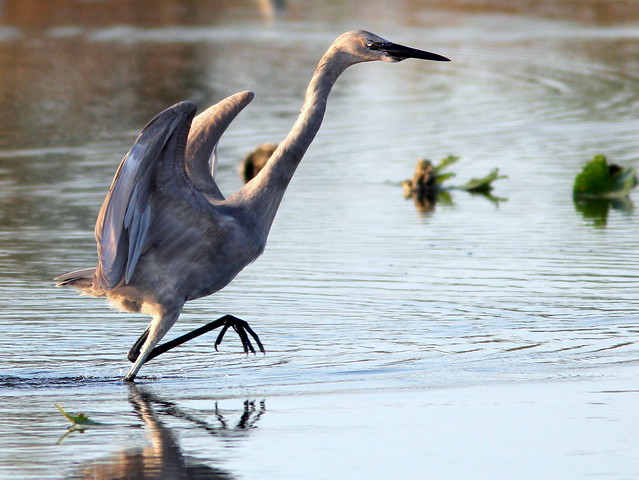
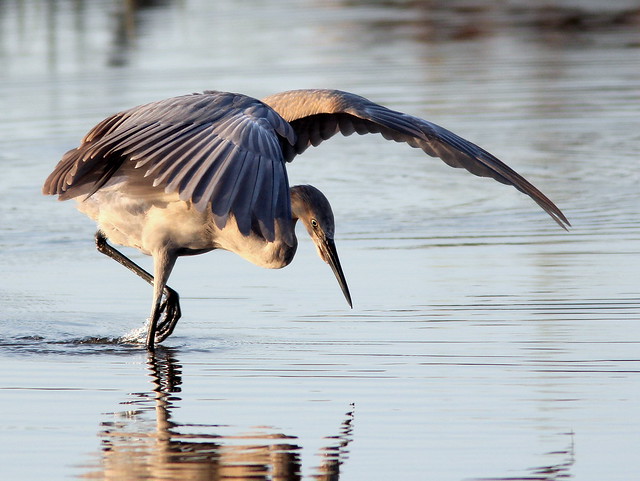
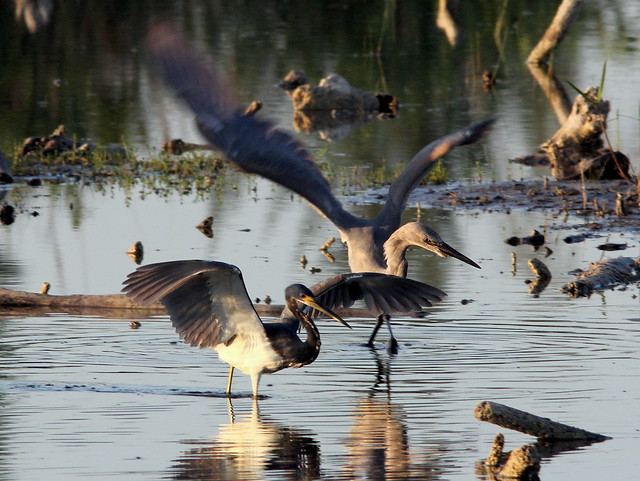
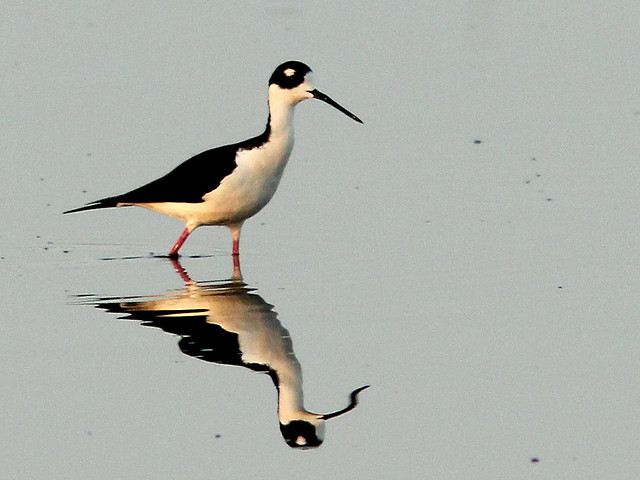
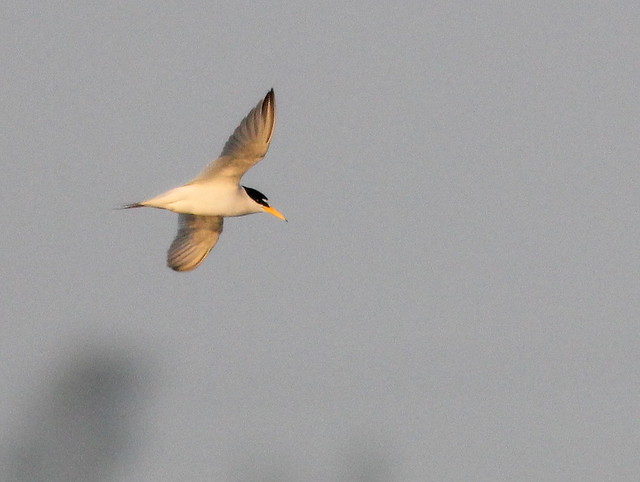
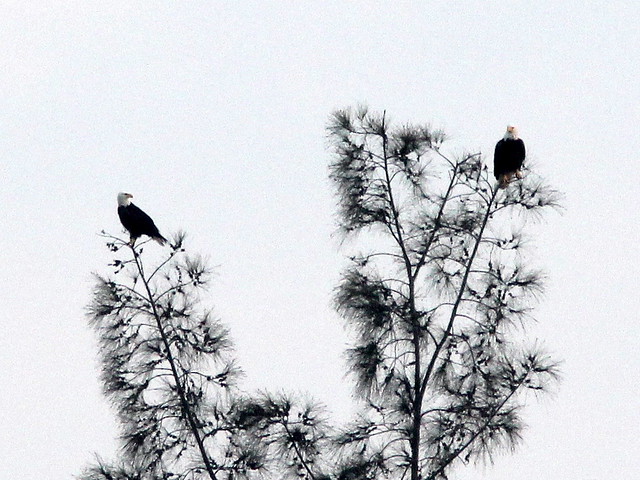
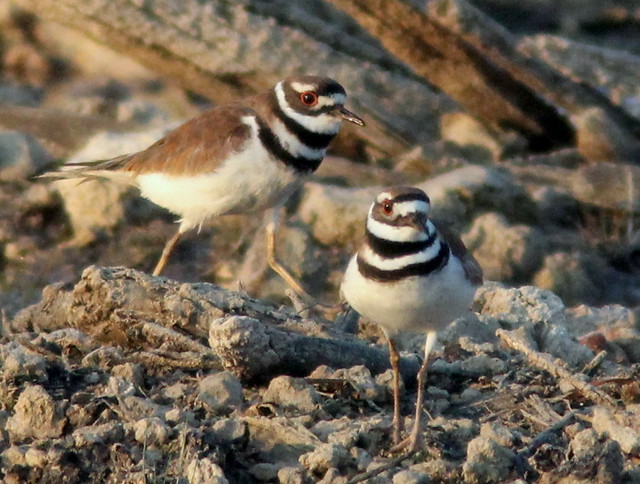
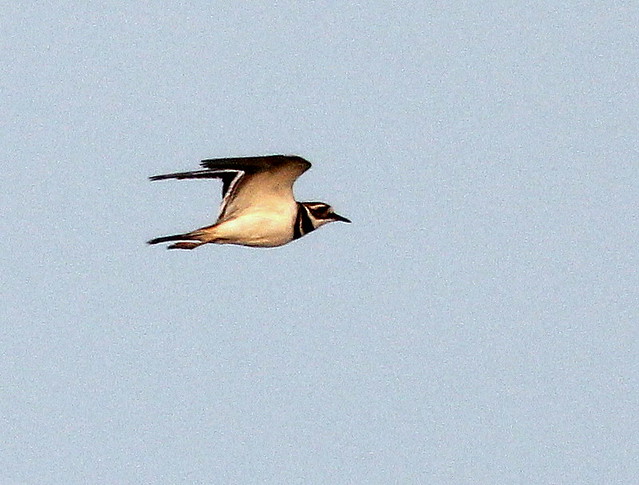
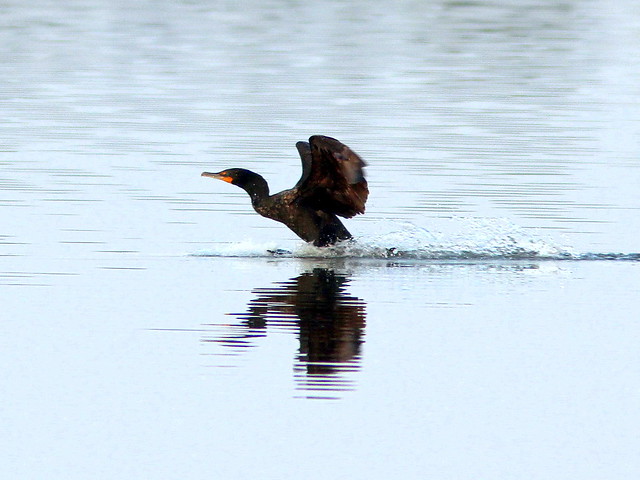
April 12th, 2011 at 4:34 pm Wow, great birds. The Reddish Egret would be a new bird for me. They do look big. I enjoyed all your bird photos, great sightings.
April 12th, 2011 at 4:48 pm A great series. Many thanks for sharing.
April 12th, 2011 at 4:50 pm Great series. Love that Bobcat. Boom & Gary of the Vermilon River, Canada.
April 12th, 2011 at 5:01 pm What a great series of photos!! Loved the behavior photos–glad the mystery is solved!!!
April 12th, 2011 at 5:52 pm Wow, your photos are stunning! Even more amazing is that you know there might be bobcats and yet you go anyway…LOL
April 12th, 2011 at 6:34 pm Wonderful photos and commentary as always!
April 13th, 2011 at 1:14 am A great series of photos. The Killdeer giving the threat display is especially good.
April 13th, 2011 at 4:42 am An excellent and informative series. Love those Killdeers
April 13th, 2011 at 9:37 am This is a wonderful, informative post! Your photos not only document the behavior of the Egret and Herons, but are stunning, artistic images.
April 13th, 2011 at 9:38 am Came back to add that I love the Bobcat photo too!:)
April 13th, 2011 at 1:42 pm This is a masterful post. I am a bit overwhelmed by it all. The reddish egret series is awesome. So beautifully photographed. You must have been beside yourself when the heron walked into the frame! It is a classic moment. Part 2: Killdeer… On one hand Killdeer look so awkward on the beech and on the other their lines are gorgeous in the air. It’s like two different birds. Part 3: Everything else… Sure, throw in a bobcat, a couple Bald eagles, a stilt reflection shot and maybe a cormorant landing just to fill in the blanks. What a wild walk. That pond is really jumping with activity. Your shutter button must need a rest!
April 13th, 2011 at 11:45 pm Amazing variety in your post! Great shots.
April 14th, 2011 at 5:42 am FABulous series of images. I have fond memories of watching Egrets ‘in action’ feeding along the surf line in Texas … thanks for sharing.